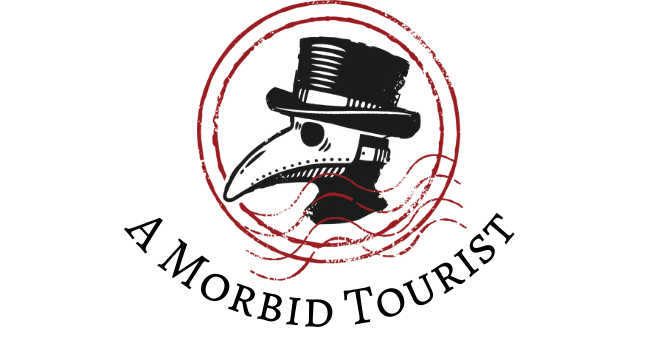Crossbones Graveyard
and its Outcast Dead
South of the Thames, not too far from London Bridge station, is a small lot on a quiet street. Were you not paying attention, you could almost walk right past. Look closer at the white letters on the black wall. That’s when you’ll discover the Crossbones Graveyard & Garden of Remembrance.
(Editor’s Note: Potential trigger warnings – CSA, suicide, child loss)

Church-Sanctioned Debauchery?
Crossbones graveyard has been referenced in historical records as early as John Stow’s 1598 Survey of London. The nickname ‘Crossbones’ came later on – the site was originally referred to euphemistically as a ‘single woman’s graveyard’. This is because the area surrounding the graveyard was Bankside, considered a den of iniquity. There were bear-pits, theatres, slums, and taverns. Poverty and crime were rampant in Shakespeare’s South London.
Bankside also contained many ‘stews’ (dead people language for ‘brothels’). Ironically, these stews were licensed by the Bishop of Winchester under ordinances dated from the 12th century. I suppose this was an attempt to control and minimise the amount of prostitution going on. This afforded the women of the stews some protection from arrest. However, the women who worked in them were not allowed to be buried in churchyards because of their profession. The hypocrisy in this is staggering. And gross.
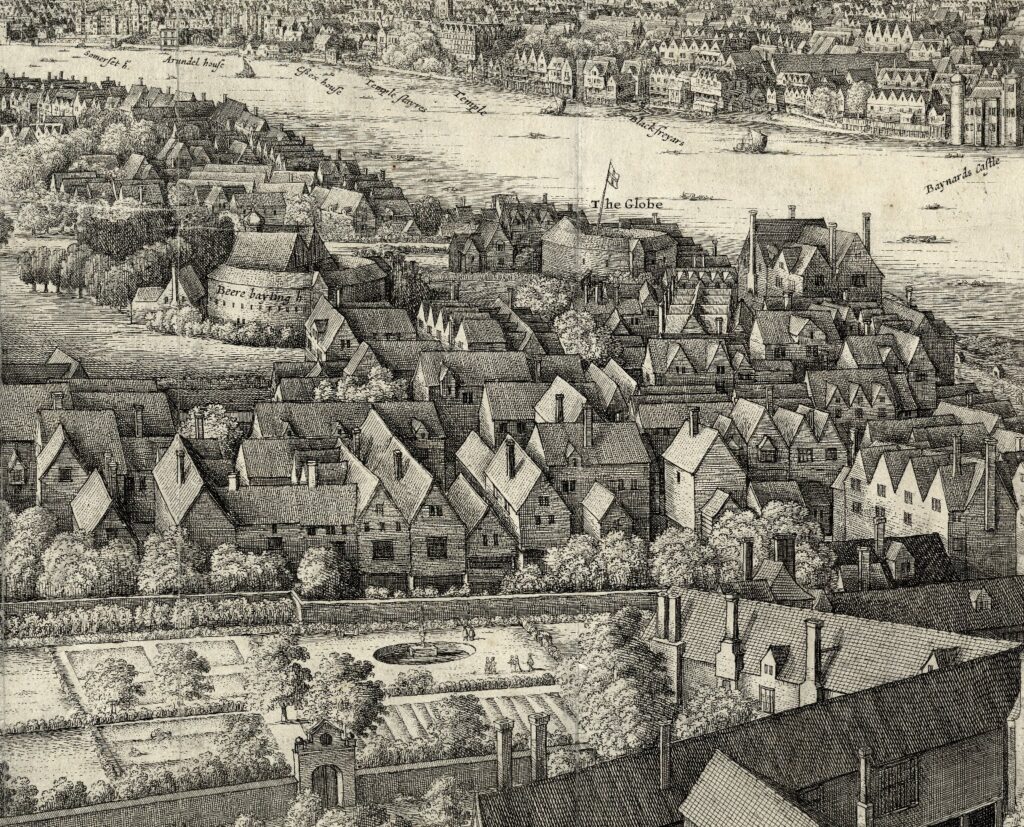
The sex workers of the time were nicknamed Winchester Geese, as they ‘belonged’ to the Bishop of Winchester. As for the geese part: it’s thought that this nickname was due to the white skin of their chests, scandalously exposed, and their loud cries plying their trades.
The lease for Crossbones was settled in 1665, a particularly nasty plague year. Some lore states that the site really started as a plague pit.
Lawless Victoriana
Crossbones Graveyard eventually evolved into more of a general burial site for the paupers and other ‘outcast dead’ of Victorian London. It was particularly useful when the surrounding slums were stricken by cholera and other diseases. The heyday of Bankside had disappeared with the closure of the brothels, taverns, and bear-pits, and the area was even rougher than before. Most of the burials consisted of sex workers, immigrants, disabled people, the homeless, and other outcasts and oddballs.
At the time, even the cops wouldn’t stray into this part of Bankside. The crime rate skyrocketed and it was a dangerous, lawless place to live. Grave robbers regularly made Crossbones their hunting grounds, unearthing corpses to make a quick penny.
Officially, Crossbones was finally closed in 1853 as it was so full of bodies that burying any more would have been a health hazard, and just generally indecent.

Unearthing Remains
The graveyard was mostly forgotten until a new London Underground line was being built near the site in the 1990s. Excavation work unearthed over a hundred skeletons. It’s generally believed that there are anywhere up to 15,000 bodies still buried in Crossbones!
One skeleton showed evidence of very advanced syphilis – the kind you can only get with repeated, untreated infections. The skull clearly has many erosive lesions all over, which was the tell-tale sign. Known only as Individual 99 (as she was the 99th skeleton excavated), she was estimated to have been 16-19 years of age. It’s believed that she was a child prostitute, which might be the grossest, saddest thing I’ve ever written.
In fact, many of the bodies unearthed at Crossbones were children, a sad reminder that even they weren’t welcome in religious graveyards.
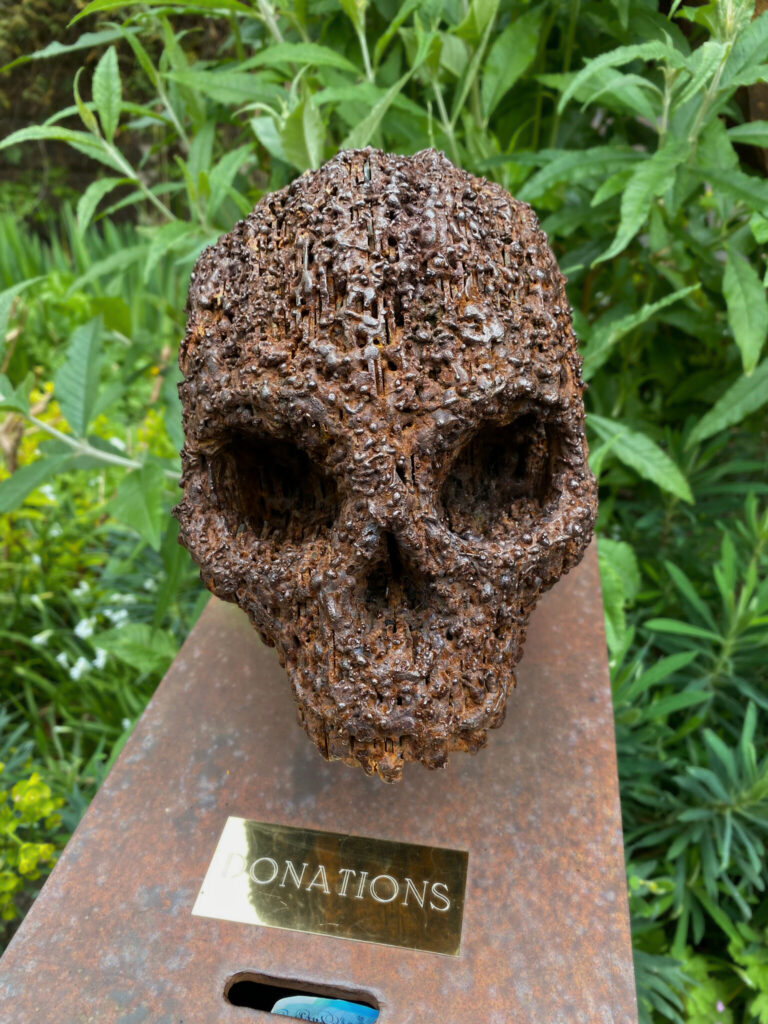
Crossbones Graveyard has been mentioned in several artistic works (including a Frank Turner song!). The most prolific of these is The Southwark Mysteries, a three-part poetic narrative by John Constable. In it, the Goose – a spirit from Crossbones – visits John Crow (Constable’s nom de plume) saying:
For the Whore that lay at The Tabard,
And well we know how the carrion crow
Doth feast in our Cross Bones Graveyard.
Resurrecting the Outcast Dead
Constable and his other half, Katherine Nicholls, set up the Friends of Crossbones Network in 1996. They wanted to protect the graveyard and campaigned for it to be restored and maintained as a garden of remembrance.
Around 2007, Andy Hulme (who used to garden for Vivienne Westwood – awesome!), designed and built the ‘Invisible Garden’ at Crossbones. He used many materials that were already there. I particularly liked that he used the chunks of lime mortar that were used to cap off graves way back when the original graveyard closed down. For his work here, Hulme was known as the ‘Invisible Gardener’.
Crossbones Graveyard & Garden of Remembrance as we know it today was opened to the public in 2015. During the same year, the Dean of Southwark Cathedral finally gave Crossbones the church’s blessing.

Crossbones say that they represent “all religions and none”.
Despite the disused status of Crossbones as a burial ground, it still serves as a memorial site for modern ‘outcasts’ who have passed away. The newer garden was designed by Helen John. First, she reburied any bones hiding in the rubble, unearthed by previous desecrations. To avoid further damage or disturbance, John utilised raised beds and brought in new soil to create the garden.
At the entrance of Crossbones Graveyard, is a lovely wooden cloister that you walk through to get into the space proper. Named ‘The Goose Wing’ after Constable’s spirit guide, it was designed by local carver Arthur de Mowbray to resemble a wing stretching protectively to shield the graveyard. The roof is tilted, allowing rainwater to run off and be collected to water the garden!
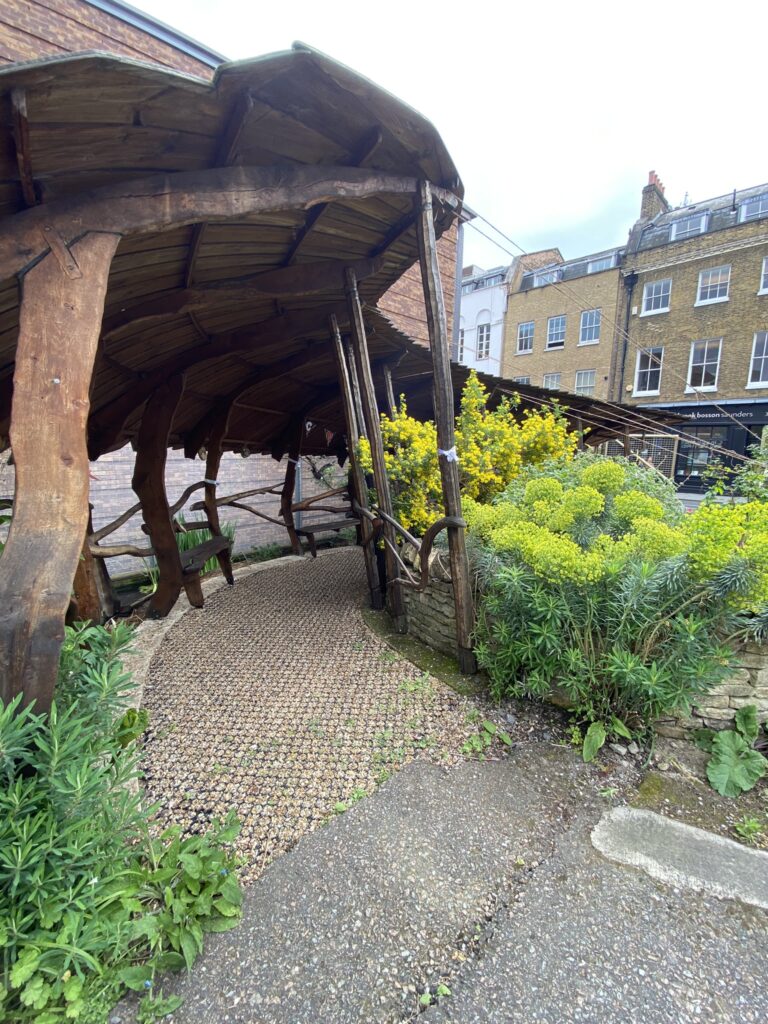
collectively and in solidarity with each other.”
– Bankside Open Spaces Trust
The Friends of Crossbones and other local supporters found themselves fighting to keep the space open, as the original lease granted in 2014 was only short-term. In 2020, Bankside Open Spaces Trust (BOST) were granted a 30-year lease to protect and maintain it!
These days, Crossbones is a garden of memorial for the original inhabitants still resting beneath the ground. But it’s also a place of remembrance for modern ‘outcasts’. This is evidenced by the large wrought gate. Since 2004, there is a yearly vigil at this gate to honour the dead and to renew the shrine there. Many people have tied tokens and mementos to the gate. I saw ribbons, flowers, sashes, badges, ties – even a pair of shoes fastened to the railing by their laces.
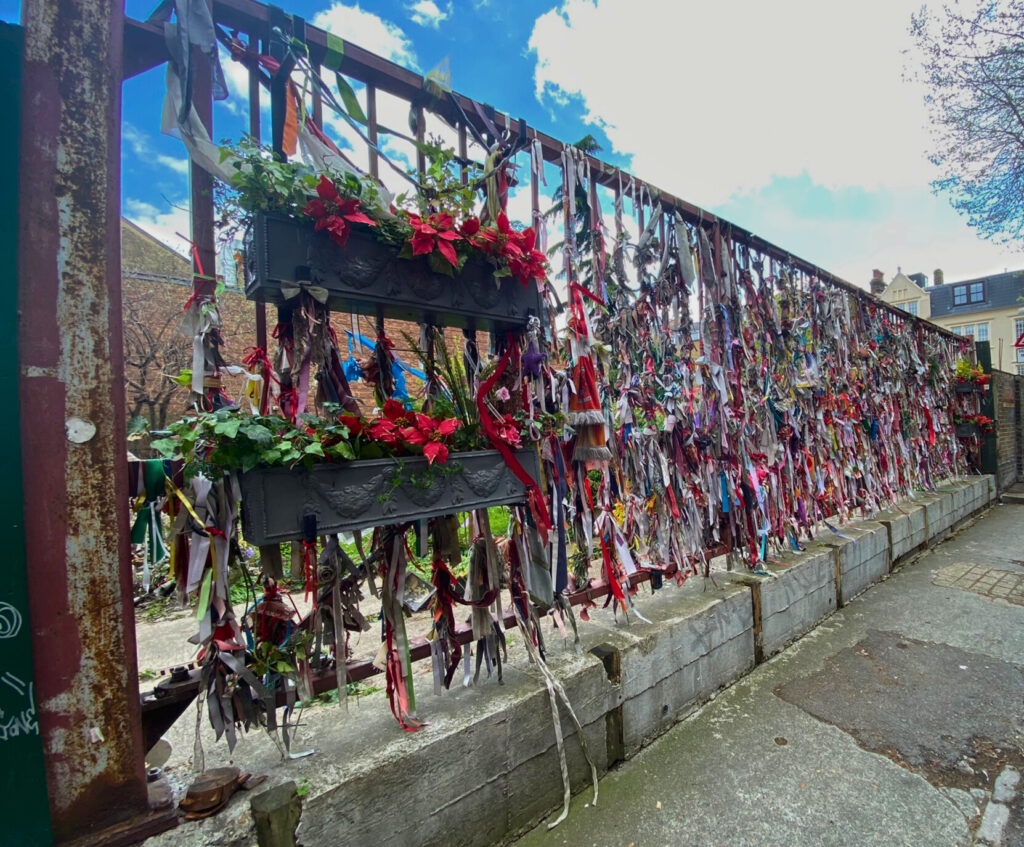
Inside Crossbones, the shrine continues on the walls to each side of the gate. Little statues of skeletons, stones arranged into motifs, tiny glass bottles, and paintings of crows abound. I was particularly touched by a nondescript board of wood that simply read: For all suicides. Different hands using different pens had written several names underneath. Honouring their outcast dead. It was incredibly sad but very poignant, too.
A Wander in Crossbones
It was a mild, grey day when I visited Crossbones Graveyard. I’d taken a stroll over from Barbican so I was thankful it hadn’t rained on my way. I read the signs outside to get more of an idea of the place, and briefly spoke with the woman who was volunteering at the entrance that day. She handed me a really helpful information sheet about the history of Crossbones, and invited me to spend as long as I’d like there.
I walked slowly under the ‘Goose Wing’, craning my neck to read the snippets of one of Constable’s Southwark Mysteries poems on the beams as I went. Here I found out that de Mowbray also built the tool shed, hilariously nicknamed ‘The Clink’ (the Clink Prison lies a ways North from Crossbones). He also uses wood he has personally and sustainably sourced for his sculptures.
What struck me most about Crossbones is how much it’s retained a graveyard’s tranquillity. There are still many remains beneath the ground, but they aren’t marked out or named like a more traditional cemetery. Despite this, the place still has the muted peace that seems to cut off the usual noise and hustle of the city around it. The atmosphere was added to by the soft smell of incense burning nearby. Wandering around Crossbones put my mind in a calm, reflective place that I thoroughly enjoyed.
Everywhere I looked I could see art. My favourite were these little wood slices with paintings on:

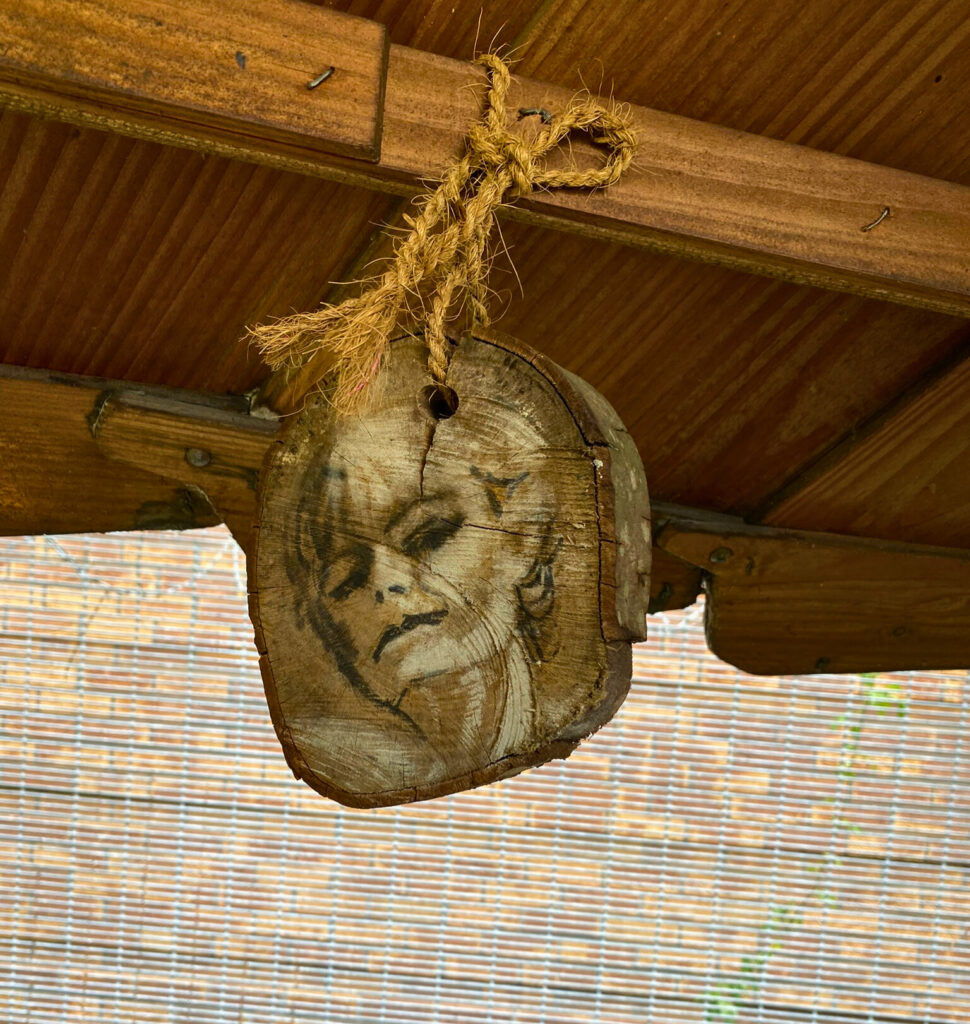
Some of the art came from very far away, like this incredible statue of La Catrina. She is the icon of Mexico’s Dia de los Muertos (Day of the Dead) festival. Day of the Dead is when everyone takes to the streets to put on parades, party, and celebrate their dead loved ones. They also eat awesome skull-shaped food like Pan de Muertos and sugar skulls. I imagine you’ve all seen the famous calaveras (painted skulls) designs before! Along with that iconic symbol, the lady of the afterlife’s image is heavily used throughout the festival.
La Catrina was donated to Crossbones Graveyard in 2021 by the Mexican Ambassador to the UK, Josefa González Blanco. It’s so cool that Crossbones reached her attention and that she felt moved to gift such a beautiful piece of art!
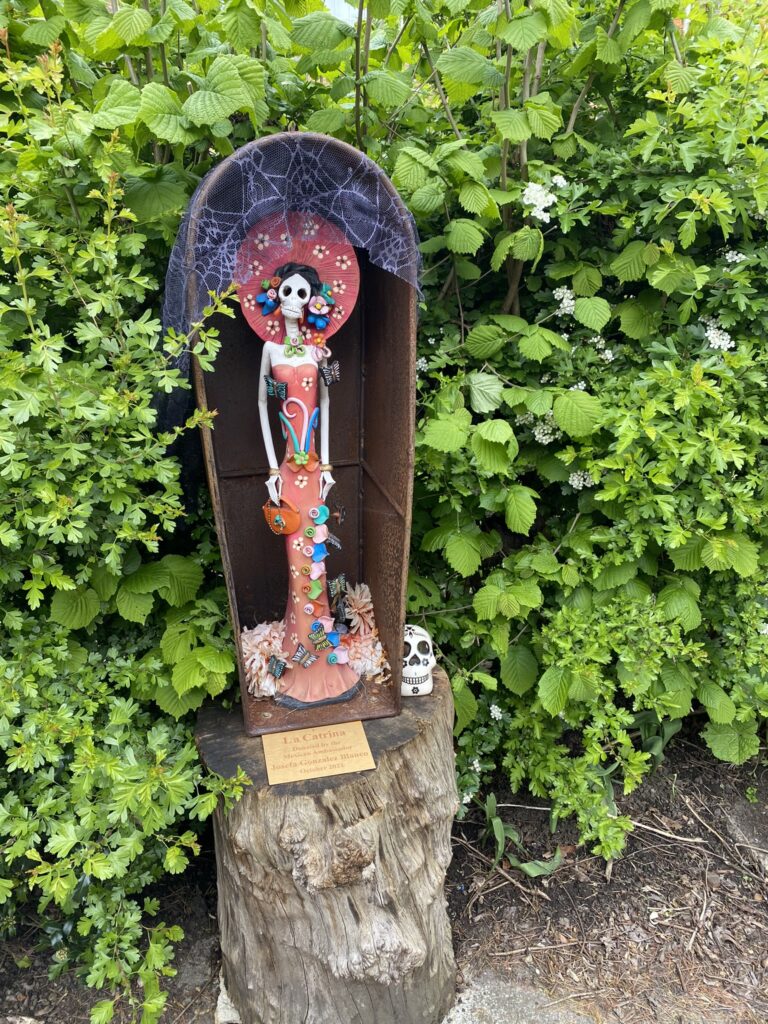
To Lost Children
I was very surprised to see a little cluster of Mizuko Jizo statues to the south of Crossbones. On further reading, it turns out that some bereaved parents had approached BOST and asked if Crossbones Graveyard could create an area dedicated to children. The suggestion that they used Mizuko Jizo was what they decided to go with for this area.
Mizuko Kuyo (水子供養, meaning ‘water child memorial service’), is a Japanese Buddhist ceremony for stillbirths, miscarriages and abortions. Mizuko (‘water child’) is the word for deceased babies. Water children include: miscarried (or aborted) embryos, foetuses, stillbirths, and newborns who pass away in the neonatal stage (the first 28 days of life).
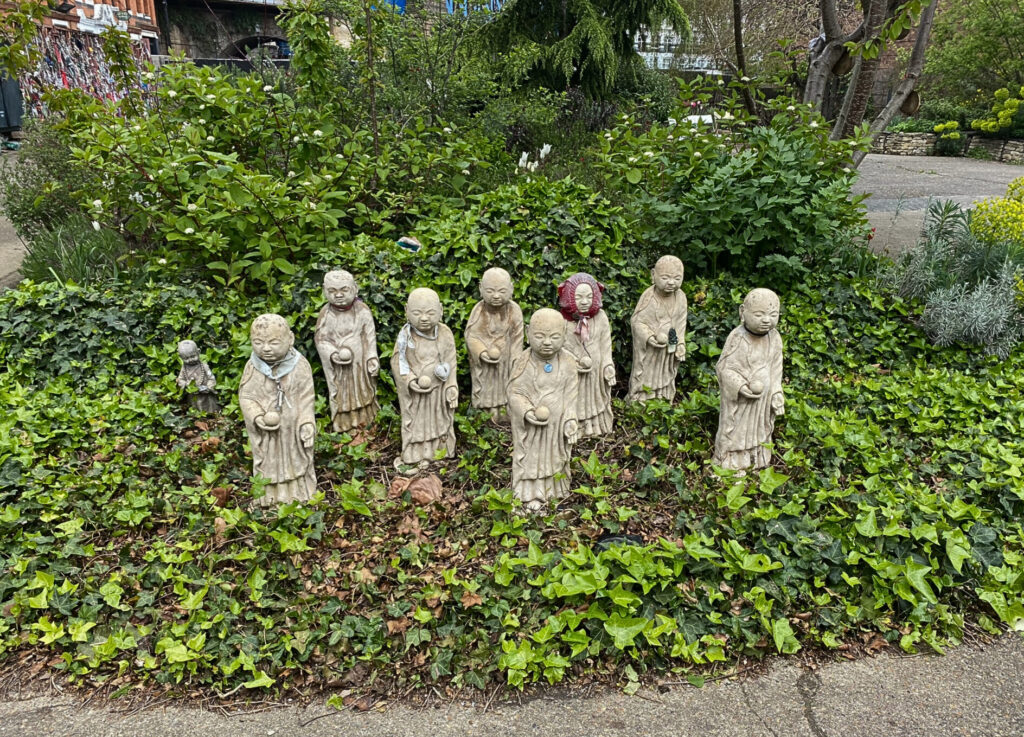
Jizo (地蔵, meaning ‘womb of the Earth’) are small stone Buddha statues that kind of resemble babies or small children. They are believed to be protectors of children (including the unborn ones). The guardian deity they are modelled after is Jizo Bosatsu, who was also the deity of travellers. So, when a child is lost, the Jizo are also the ones who will safely guide them into the afterlife.
It put a real lump in my throat, and I thought it was absolutely beautiful. A huge shoutout to Josh Locksmith, who carved the statues. Around them you can find small offerings left by visitors. When I was there, one was wearing a red cap, as is traditional for these statues. Red is the colour of love, energy, life, and protection – red scarves are often seen on stone deities around Japan (I saw many when I was out there).
The Pyramid
At the north end of the Crossbones garden, things got a little more disordered and somewhat empty. On the edge of the emptiness sat a stone pyramid. The structure is a holdover from Hulme’s original ‘Invisible Garden’. Volunteers have sprinkled seeds on and around the pyramid, in order to allow plants to grow up around and burst through the sides.
I loved the decision to cover one face of the pyramid with oyster shells. Oysters are one of the many now-luxury foods that were previously a staple for the poor. Back then, they were incredibly cheap to buy and weren’t taxed. That is, until the 20th century, when rich folk got over the fact that oysters look like a dish full of snot and realised that they were tasty. Hence, they became a prohibitively expensive posh person food. Hulme’s pyramid reclaims the oyster for the common people!

The stories behind Crossbones Graveyard, the long and wild history, and the current wardens’ fierce love and protectiveness of the place and of our outcast dead… All of this came through so loudly during my visit there. As someone who frequently feels like a misunderstood weirdo, I felt especially welcomed. I really loved being there, and would like to go back and maybe eat lunch or read. Every year, as well as the aforementioned vigil at the gate, Crossbones puts on the Halloween of Crossbones ritual drama, which I’d like to see one day.
The best part about Crossbones Graveyard, for me, is that it’s never complete. The garden will continue to evolve, people will continue to leave their art and memories, and the caretakers will come up with other great ideas. It’ll be different every time you see it, whether minutely or massively, and I’m so excited to see what else pops up as time goes on. There is also talk of a potential expansion of the garden, so we’ll see what happens!

You can find out way more about Crossbones Graveyard & Garden of Remembrance, its history, and how to get involved, at their website!
